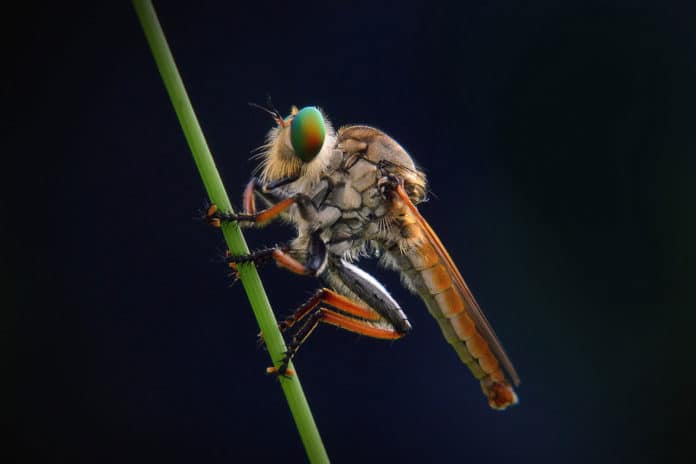Robber flies have similarly small brains. Still, they manage to fly gracefully through the air to catch their prey without slamming proboscis-first into barriers. This makes these mini assassins the perfect subject for scientists to understand how small species make the best out of their limited number of neurons and visual inputs to hunt at high speeds.
In a new study, scientists from Imperial College London used high-speed cameras to determine how robber flies balance between avoiding obstacles while chasing their prey. They found that these flies combine two navigation systems to steer themselves mid-flight using high-speed cameras.
Lead author Dr. Samuel Fabian from the Department of Bioengineering said, “The real demonstration of flight is that insects don’t have many neurons, to begin with, at least compared to your average vertebrate, and are relatively computationally limited.”
In collaboration with the University of Minnesota, scientists found that robber flies use their visual inputs and a combination of two simple control systems to steer their flight. One system is pure-proportional navigation, whereas the other is a simple avoidance algorithm.
If we imagine a line connecting the robber fly’s eyes to their prey, called their line of sight, changes in the robber fly’s speed and the direction of their flight are determined by how their line of sight changes. The second system ensures that the fly does not collide with obstacles. If a block is coming towards the robber fly, growing larger in their field of view, the robber fly veers away from it.
Combining these two simple navigation systems allows the robber to fly to hunt prey while deftly weaving around obstacles.
In the experiment, robber flies were made to discover a small moving target of 1.3 millimeters long, traversing a thin cord. Scientists also introduced an obstacle in the form of a black acetate bar that sometimes obscured the moving target or blocked the robber fly’s flight path.
Using high-speed cameras, scientists recorded their experiments. Through this, scientists could reconstruct the robber fly’s flight in 3D. Later, they tested different models through simulation by comparing their behavior to the real flies’ paths.
Dr. Fabian states that “understanding how small species make decisions mid-flight can inspire the design of light robotic aerial drones.”
“Robotic systems, unlike animals, struggle to balance two competing goals – such as navigating around obstacles while moving towards a target. Often, robotic systems will use sensors that utilize the reflection of lasers or sound waves to understand the obstacles around them. However, such sensors can be too heavy for aerial drones.”
“The good things about the obstacle avoidance that insects do, amongst many other flying animals, is that it’s all done by vision.”
Journal Reference:
- Kathryn Knight; Robber flies combine approaches to simplify airborne interceptions. Journal of Experimental Biology 15 February 2022; 225 (4): jeb243931. DOI: 10.1242/jeb.243931
